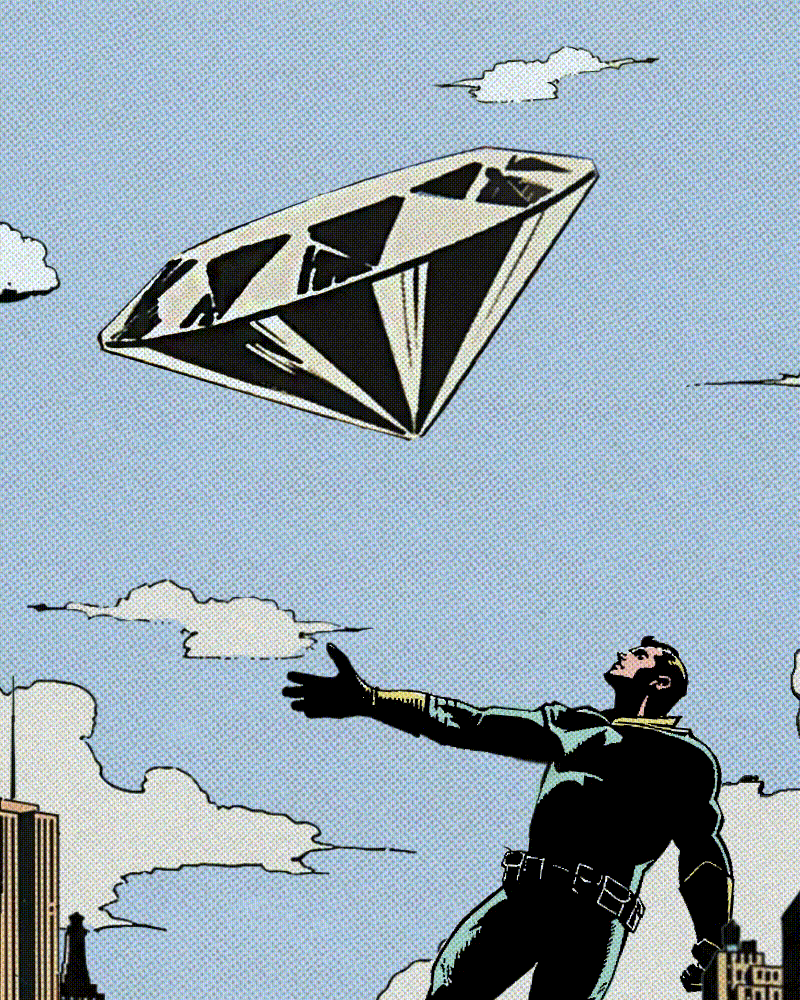The Diamond Era of Cinema
Natural diamonds hold a special place in cinema: sometimes as the object of nefarious plots and thrilling heists, but always as the source of eternal romance. Rahul Desai talks us through cinema’s love affair with Diamonds, taking us back to an era of cinema hugely inspired by the timeless gem.

The Era Begins
A natural diamond, like great cinema, is a visual medium: rare, timeless and eternally relevant. My first proper memory of watching a film was one that featured a diamond as a prominent part of the plot. In Superman III (1983), Christopher Reeve’s caped superhero casually crushes a piece of coal in his hands to reveal a sparkling diamond. In the next scene, his geeky alter-ego Clarke Kent presents this diamond, fitted as a ring, to his girlfriend. They share a tender embrace, before Kent is attacked by her jealous ex-husband. Needless to mention, the man with the diamond wins the battle. This single scene captures the dual dimensions of the natural diamond’s long-lasting relationship with cinema: Imagination and romance. The villain is disposed of with great imagination, while the couple is united in eternal romance.

Image Credit: Artist Rendition
These two dimensions have long represented the allure of diamonds on the big screen. Imagination, for instance, is the cornerstone of mainstream Hindi cinema. If the late 1940s to the early 1960s was known as the Golden Age of Bollywood for its art, the next three decades can be called the Diamond Era of Bollywood for its plots that revolved around the Timeless Gem. Most titles were smash-hits, with audiences projecting their aspiration for the precious Stone onto mischievous movies that eventually heightened the desire for Diamonds . The enchantment of the Pristine jewel played the central role, of both enabler and redeemer, in these films.
If the late 1940s to the early 1960s is known as the Golden Age of Bollywood for its art, the next three decades can be called the Diamond Age of Bollywood for its diamond-centric plots
A Role for Every Diamond
Diamonds become the emotional bridge that connects the great Indian family in Yaadon Ki Baarat. Dharmendra’s character Shankar, one of three separated brothers, grows up to become a thief whose fateful diamond robbery is what triggers a series of chance encounters with his past, eventually leading to a teary reunion. Diamonds and a glamorous thief are also what lead two loafers to respect their honest police-officer brother in Ramesh Sippy’s Shaan. The film is memorable not just for the reunion of Amitabh Bachchan and Shashi Kapoor, but for Khulbushan Kharbanda’s legendary villain Shakaal, who operates from a private island with killer crocodiles circling below his revolving office.

Image Credit: Image Credit: Artist Rendition
The most iconic of them all was Victoria No. 203, a film where diamonds literally play the invisible leading role by uniting a group of affable ‘70s stars such as Ashok Kumar, Pran, Saira Banu, Navin Nischol and Ranjeet on a wildly entertaining ride of twists and turns.
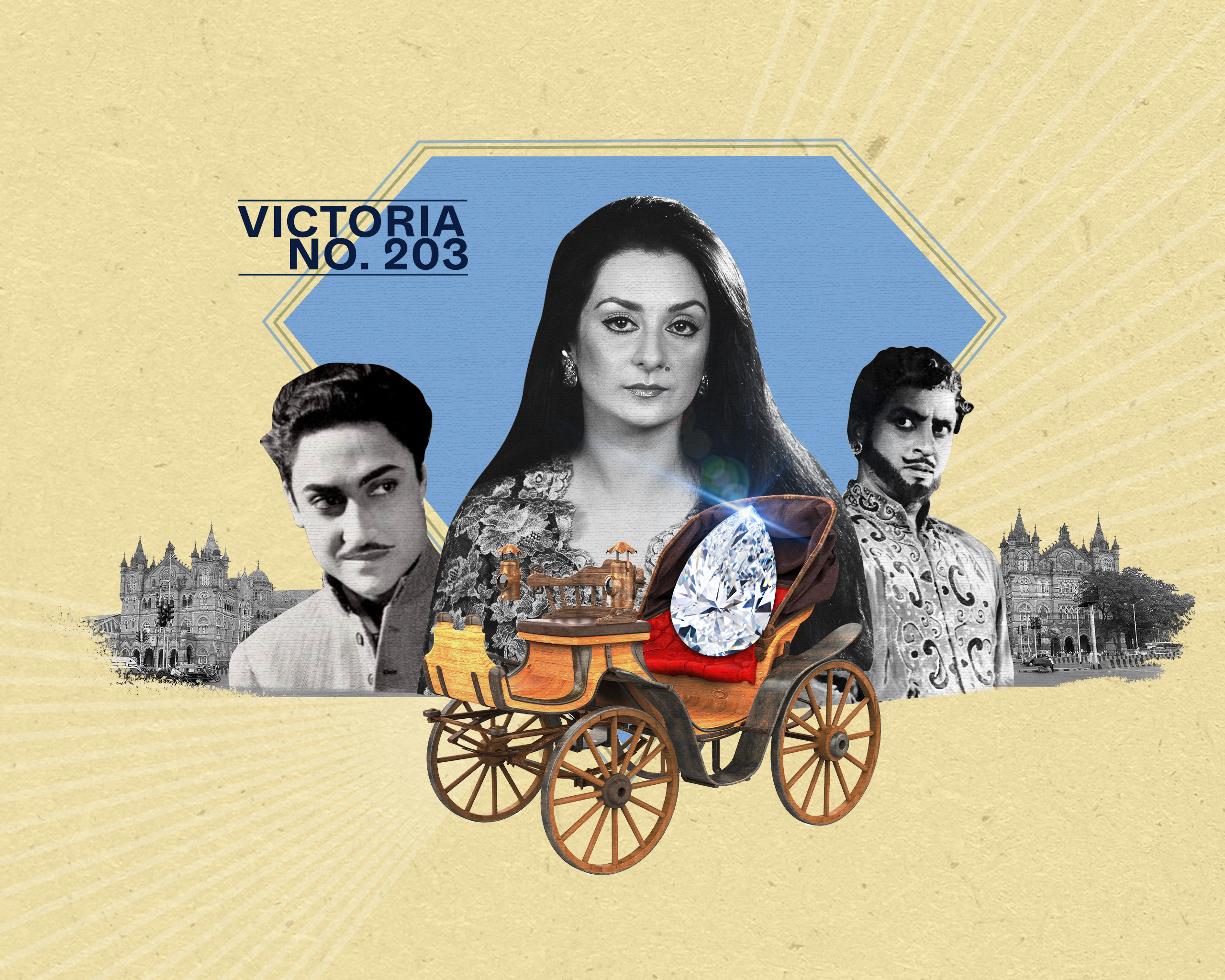
Image Credit: Alamy and Artist Rendition
Manmohan Desai’s Sachaa Jhutaa, released in 1970, is a film about good and bad doppelgangers, featuring the legend Rajesh Khanna in a double role – as conniving robber Ranjith and sweet simpleton Bhola. The movie is remarkable for how it explores the details of the diamond business. The highlight is a lengthy Natural Diamond Jewellery exhibition scene featuring jewellers examining the gem with fancy loupes.
In Dev Anand’s Heera Panna (1973), the hero Heera (translation: diamond) has a passion for photography, which works as a metaphor for how diamonds satisfy the human eye as a visual artform. Heera is also the object of affection for a diamond thief named Panna (Zeenat Aman), and the plot features the priceless gem as a symbol of redemption for a tragic hero who loses not one but two heroines in the film.
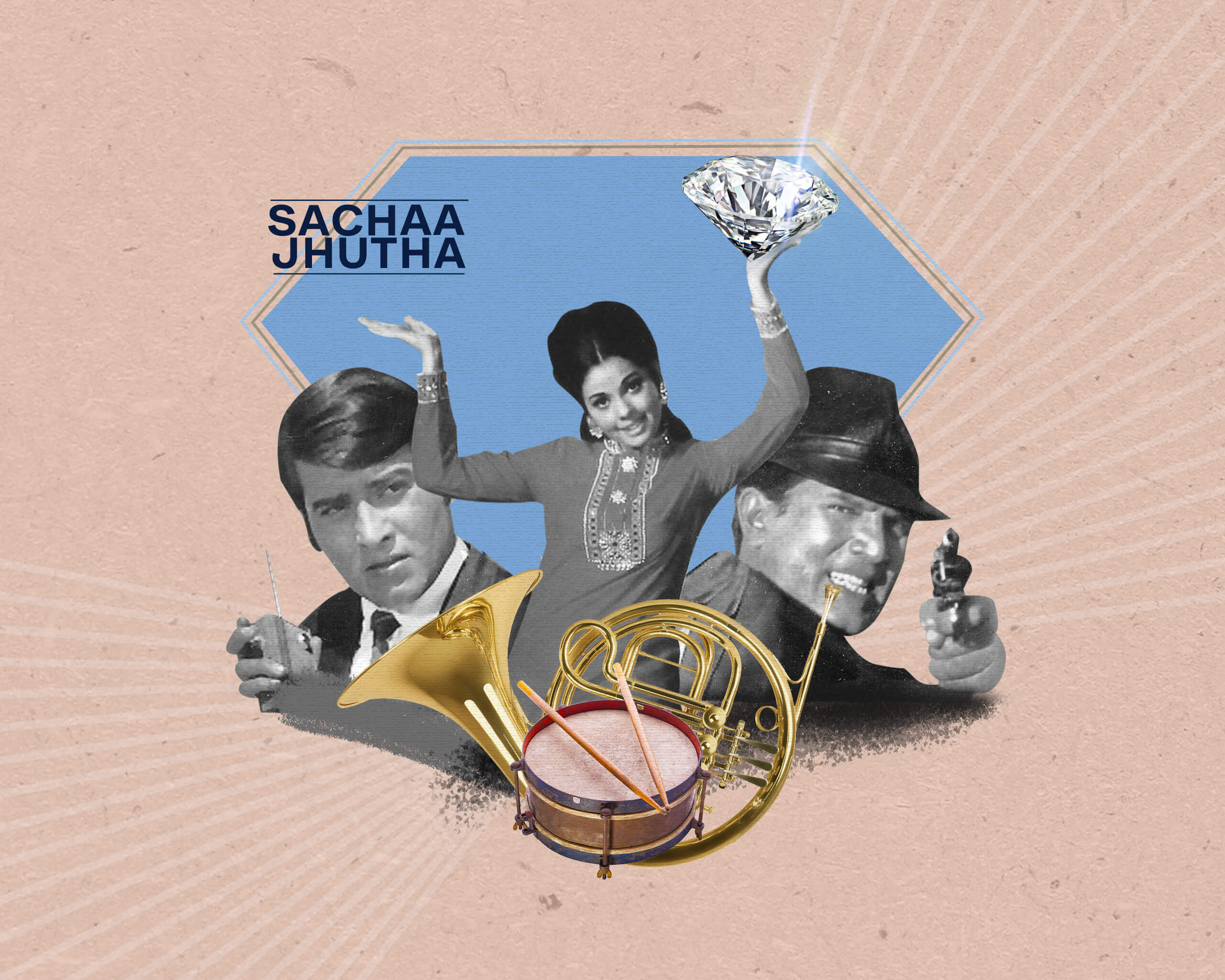
Image Credit: Shutterstock and Artist Rendition
On the other hand, romance is the cornerstone of mainstream Hollywood. The most iconic scene of 1950s Hollywood features a shimmering diamond necklace in the dark. In Alfred Hitchcock’s To Catch a Thief, the charming Cary Grant and ethereal Grace Kelly flirt in a palatial room against the backdrop of fireworks in the French Riviera, before sharing the most famous movie kiss of the decade. Theirs was the ultimate anti-heist movie, with the romantic track largely dependent on the hero having to prove his innocence. Similarly, Gentlemen Prefer Blondes, the ditzy romantic musical, is remembered for the gorgeous Marilyn Monroe singing “Diamonds Are A Girl’s Best Friend” before the film closes with a happy double wedding.
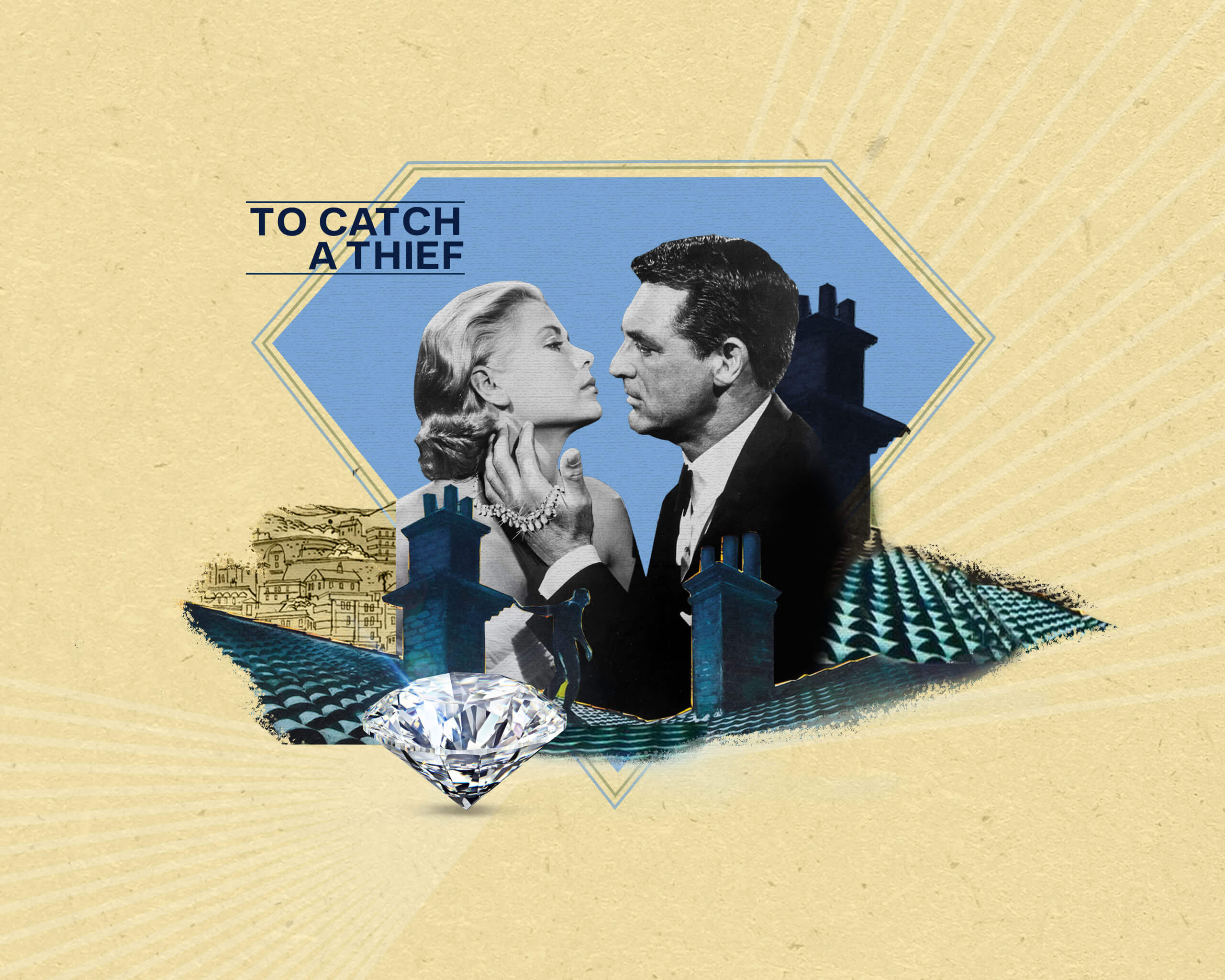
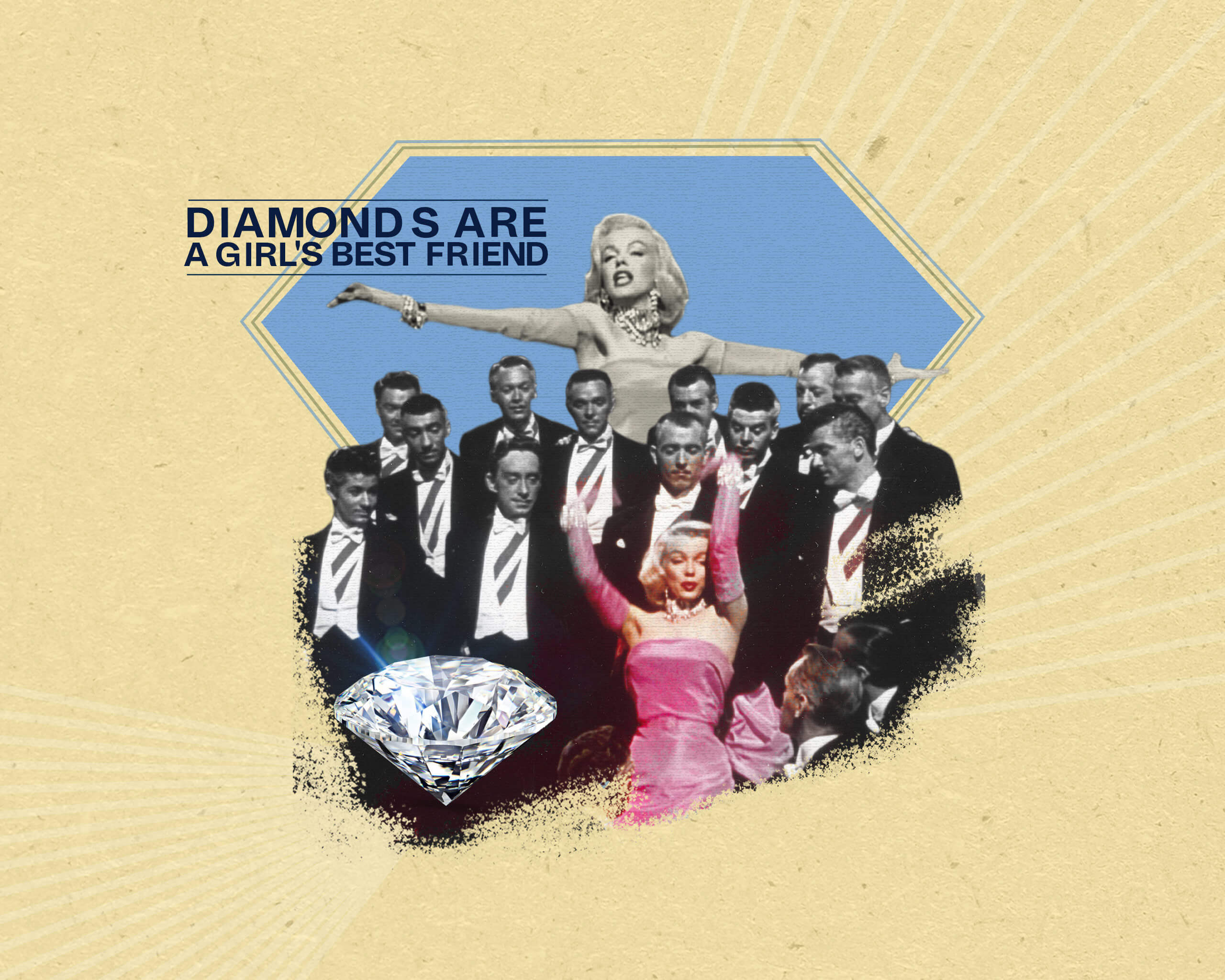
Image Credit: Alamy and Artist Rendition
Then there was Hollywood’s real-life romance with natural diamonds. The shiny little miracles of nature were thrust into the global spotlight when actress Elizabeth Taylor, famed for playing Cleopatra, was gifted a vintage diamond by husband Richard Burton. She wore “the Elizabeth Taylor diamond” as a special engagement ring – it went on to define her legacy of rare and authentic beauty. The stunning actress then wore the “Burton-Taylor diamond” to the 1970 Academy Awards to present Best Picture. Both these unique stones symbolized the most high-profile Hollywood marriage of all time.
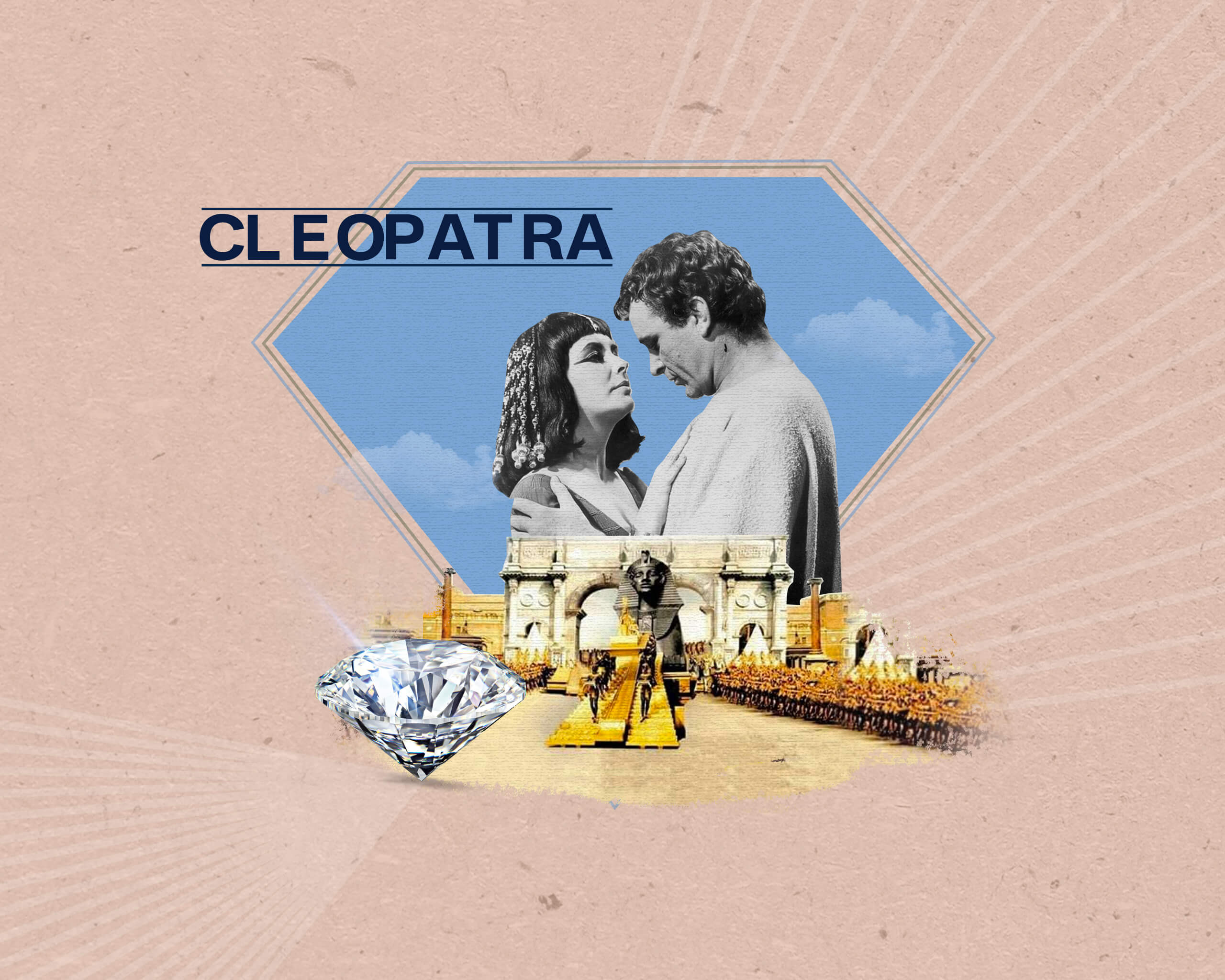
Image Credit: Wikicommons and Artist Rendition
Diamonds are Timeless Inspirations
But any discussion on the immortality of larger-than-life love stories is incomplete without a mention of one specific film. It’s only appropriate that James Cameron’s Titanic is driven by the fate of a brilliant blue diamond called “The Heart of the Ocean”. The most enduring image of Titanic features Kate Winslet’s Rose being sketched by Leonardo DiCaprio’s Jack while wearing nothing but the prized diamond necklace. The fictional diamond of the film was based on the real-life Hope Diamond, which was originally bought by a French merchant in India. Given the dramatic emotional connection evoked by natural diamonds, perhaps it’s fitting that the most resilient symbol of romance in cinema found its origins in India.

Image Credit: Shutterstock and Artist Rendition
Speaking of India, movies in the 90s and the 21st century continue to hold diamonds in high regard, whether it’s the cult comedy Andaz Apna Apna, the thriller Aankhen, or the modern love triangle, Dedh Ishqiya. Just a reminder that the ‘Diamond Era of Bollywood’ hasn’t really ended. After all, diamonds are forever. As are the movies starring diamonds.
